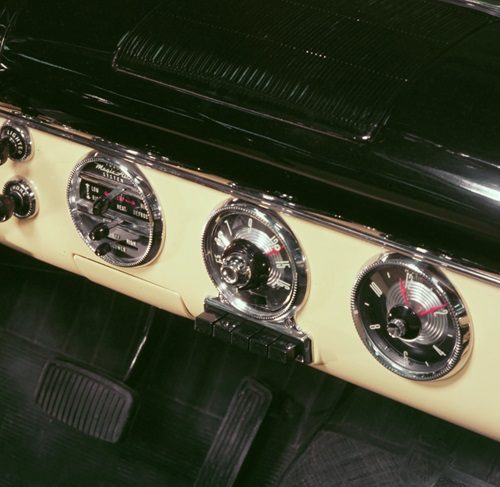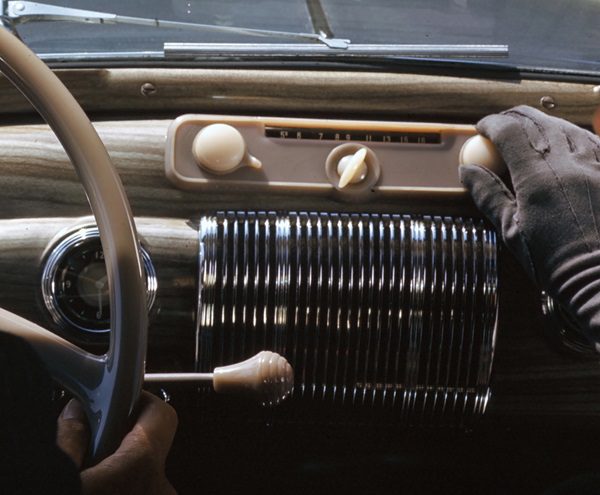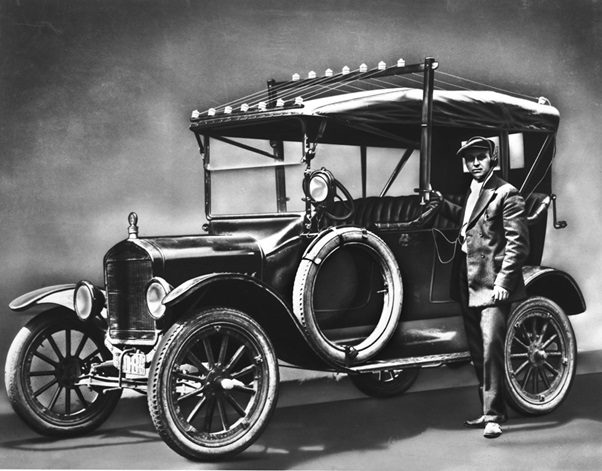These days car radios are hidden away in the digital brains of touchscreen infotainment systems, but a century ago they were so big they’d take up the entire back seat of a car. To celebrate Thai Radio Day (25 February) we’ve dived into the Ford Heritage Vault to celebrate what is still the world’s most popular form of in-car entertainment.
Radio arms race
When US radio station KDKA broadcast the 1920 US presidential election returns for the first time, it kick-started an automotive audio arms race. Listeners could get the news before newspapers could publish it – and that meant they also wanted to be informed on the move. By 1922, car makers were offering portable units that were big and bulky and cost almost a fifth of the price of a new car.
Technology advanced quickly. Within 10 years, automakers had overcome ignition system interference issues, bulky batteries, developed clever aerials and integrated radios into the dashboard, like the famous Ford Glove Box radio. By 1933, 31 of 33 car makers in the US offered cars with a built-in antenna and a radio as an option, while some, like Ford, began offering them as a custom-designed unit and sold with the car by the dealer.
interference issues, bulky batteries, developed clever aerials and integrated radios into the dashboard, like the famous Ford Glove Box radio. By 1933, 31 of 33 car makers in the US offered cars with a built-in antenna and a radio as an option, while some, like Ford, began offering them as a custom-designed unit and sold with the car by the dealer.
Ford’s radio origin story
In 1929, Charles Thomas, manager at the Ford Acoustical Laboratory, began experimenting with the installation of a radio into a Model A Ford. It wasn’t easy. Because the fuel tank sat behind the dashboard, Thomas squeezed the equipment under the floorboards and installed a tuning stick that sat like a gear stick between his legs.
It was a crude concept, but it was enough for Ford to green light a production prototype.
The first Ford in-car radio sets were delivered Grigsby-Grunow in 1932 not long after the iconic 1932 Ford V8 hit the street. The ‘Majestic’ Model 111 radio was a motor-generator powered, six-tube superheteredyne receiver, with automatic volume control and a ‘squelcher’ feature to reduce static noise between stations.
By 1934, Ford was installing compact Philco and Ford co-developed radio receivers designed to replace the small ash tray in the centre of the instrument panel.
Demand grew exponentially. In 1932, around 25,000 radios were installed into Ford vehicles in the US, but by 1935 the number had grown to 200,000. Radio had become king and Ford remained at the forefront both in the design of the units and technology driving them.
 The decades of change
The decades of change
The 1950s saw the greatest transformation of radio receivers since their in-car introduction in the 1930s. Enhancements arrived thick and fast: miniature glass tubes; the switch to 12-volt systems; the application of the transistor as an audio amplifier; the hybrid circuit, the adoption of printed circuits; and finally, the fully transistorized radio.
The late 1960s and ’70s saw radio evolve again, with an AM/FM receiver as an option, along with a tape player and an AM/FM search tuning radio. A stereo tape player was added in 1973 and, then in 1979 the all-electronic AM/FM stereo search with quadrasonic 8-track tape player arrived.
From then on, it was the introduction of extras like cassette players, CD players, MP3 and wireless streaming that made headlines, but AM/FM remained.
To help celebrate Thai Radio Day we’ve hand-picked a selection of images from Ford’s storied radio receiver history.

